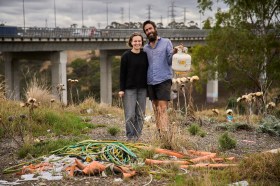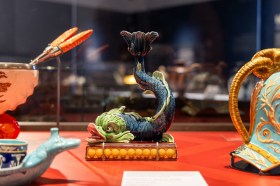The Jacaranda Acquisitive Drawing Award (JADA) is a cornerstone of Grafton Regional Gallery’s program, with entries now open to both emerging and established artists.
Director of Grafton Regional Gallery, Sarah Gurich, tells ArtsHub, ‘The Jacaranda Acquisitive Drawing Award is Australia’s richest regional drawing award. Now in its 16th biennial iteration, the JADA is an event that artists know is on the calendar.’
She continues, ‘JADA represents decades of community support for the arts and culture of the Clarence Valley. The prize emerged from community members getting active in the early 1960s and deciding that they wanted to create a civic collection and start an art prize as part of the Jacaranda Festival each year. From that they lobbied Council for the creation of a regional gallery, which was established in 1988. In 2021 we reopened after a $7 million redevelopment.
‘There is so much community support, action and initiative in the JADA that many do not realise when entering a prize like this… A lot of regional prizes have developed in this way – they have a real history behind them and they mean a lot to the regions that have grown and nurtured them.
‘To this day, the JADA is supported by Friends of Grafton Gallery and they exist entirely to fundraise for the JADA,’ Gurich explains.
Around 50 finalists will be selected for the 2024 JADA Exhibition, which will be held at Grafton Regional Gallery from 28 September to 8 December. These artists will be in the running for the $35,000 major acquisitive award with a $5000 non-acquisitive Emerging Artist Award also on offer.
The winner’s work will enter the Grafton Regional Gallery collection and will be put up for future exhibition and loan opportunities. Previous JADA winners include Michael Zavros, Catherine O’Donnell, Gordon Bennett, Emma Walker and many more.
Gurich says the history of JADA speaks to its success and, while ‘galleries have their own areas of collection focus, Grafton certainly has drawing at its core’.
Entries to JADA have been building every year, and Gurich adds that the aspect of drawing that appeals to her the most is its immediacy.
She continues, ‘Drawing is a fundamental tool of an artist, but it also reflects current trends. The JADA of 2024 is very different to the JADA of 1994. We see more expanded and experimental drawing practices using different mediums and materials.’
With entries open until 30 June, artists are invited to make the most out of this opportunity or take the bold move of creating new work for the 2024 JADA. Artworks can be 2D or 3D, with a maximum size of 150 x 150 centimetres.
The prize defines drawing in the broadest sense, as ‘primarily driven by mark-making using various mediums’, making JADA accessible to artists who may not consider drawing to be a main focus of their practice.





